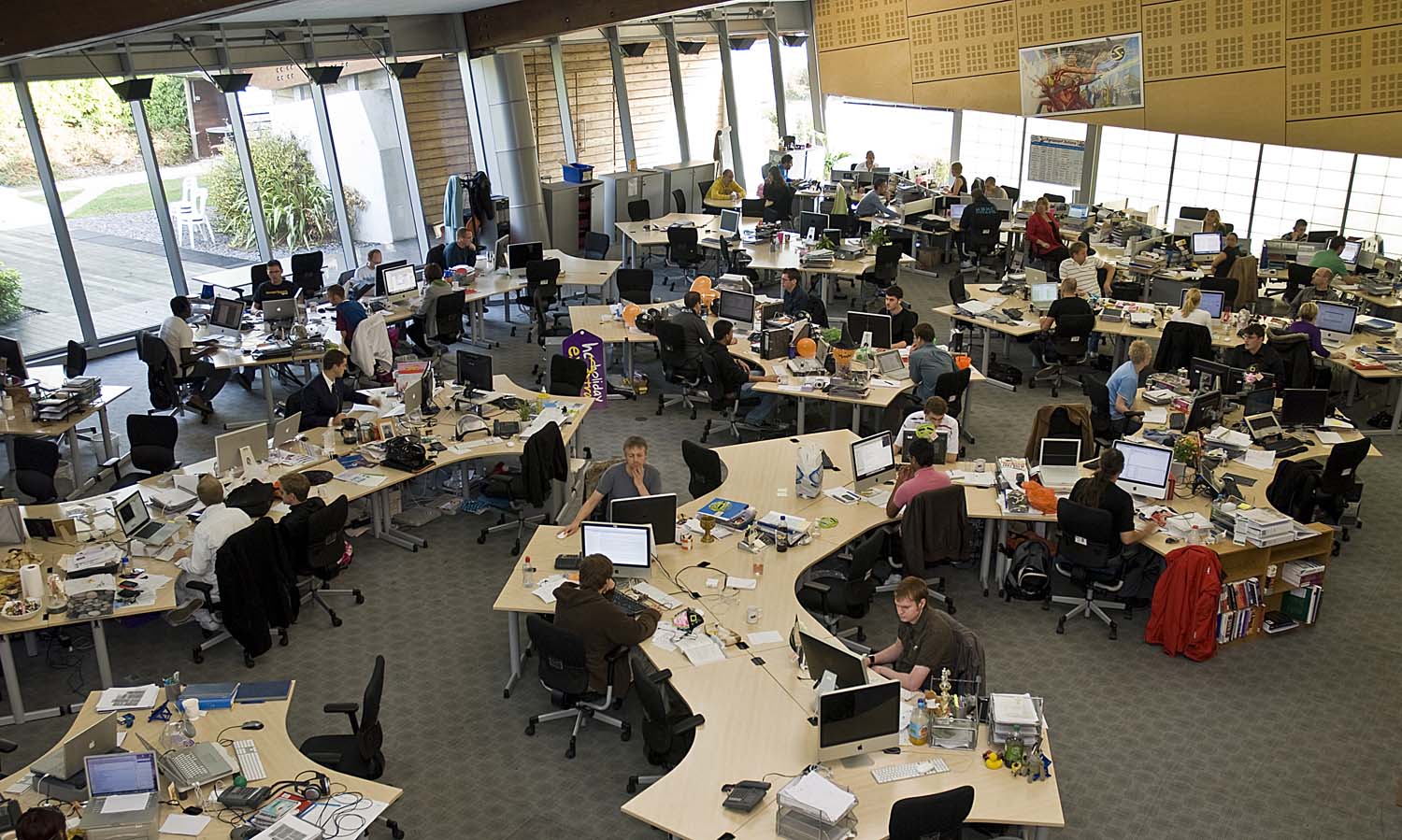How open offices affect high performance employees

Imagine working in an open office. At some point it may seem that an open working environment is conducive to easy communication and cooperation. However, the rest of the working time is the loudest, the most annoying, distracting and unproductive environment that you can imagine.
Distractions are killing the performance of highly efficient employees (VPS) - software engineers, data analysts, designers, 3D prototype developers, and other key professionals. This is an obvious fact that has long been widely discussed.
')
Distraction is the only serious obstacle to the high efficiency of talented workers. If a high-performing employee needs about 25 minutes to regain concentration after a break and is distracted during the work day, for example, four times, then 100 minutes will turn out — almost two hours of wasted time.
Often, there is a natural barrier between managers and high-performance workers (UPU) - they tend to have a very different world view. This state of affairs is very clearly manifested in the working environment of creative and technical offices.
According to an anonymous survey conducted among 700 respondents from the IT, marketing and manufacturing industry, 58% of high-performing employees need a more private space to solve their tasks, and 54% consider an open office environment “too distracting.”
Ordinary employees often like to chat, distracting their colleagues by talking about sports, politics, jokes and discussions about the appearance of other employees. High-performance employees are the exact opposite. Usually they devote a large part of their life to mastering one, in rare cases, several specializations and the pursuit of truth in their craft. Therefore, they can not tolerate distractions, because of which it is simply impossible to perform their work. As a result, they are forced to stay out of hours or work from home - in an environment where they can be as efficient as possible.
Distractions and breaks for the UPU come in various forms. It can be as natural factors, such as loud noises, people scurrying along the corridors, creaking furniture, excursions, chatter and laughter, office animals and other things. Often, key employees are distracted by working moments: someone came up with a question, someone needed feedback, an “emergency situation” happened, someone came up with a cool idea, and so on.
To understand how distractions interfere with the concentration of the human brain, one can imagine, for example, a computer overloaded with a large number of tasks. Working memory is filled with things that a person consciously perceives at any given time. This could be a service dog, a sniffing hand, music that a colleague is listening to with headphones at the next table, as well as any worries and anxieties. These things fill the working memory and greatly inhibit any attempt to work on new ideas. Too many simultaneous distractions will block every attempt to reach a high level of concentration.
What is fraught with such an attitude to talented employees? If one of the goals of the UPU is to achieve excellence, then distractions will reduce efficiency and become a source of deep disappointment. If a person is distracted often and regularly, then he will simply find another job. According to the results of the survey, 65% of people noted the ability to skillfully sell their work to an employer as the main reason for leaving a nasty job.
In addition, low productivity will damage product quality and time to market. If the most talented employees struggle with distractions most of their time, the end product will suffer.
In general, offices are now too open: most of them are organized frankly lazy. Companies spend thousands of dollars on free coffee, food, passes to fitness rooms and many creative privileges, but uncomfortable work spaces do not disappear anywhere, but vice versa.
If a manager does not seek to understand his high-performance employees, he risks getting the most unproductive environment for potential success. That is, a simple and unimaginative solution based on the remote understanding of innovation as the result of random attacks of social interaction as opposed to understanding innovation as a stable foundation that needs to be cultivated and maintained for a long time.
In open environments, managers see social collaboration and a surrealistic connection between disparate activities. Executives want the next original idea to come from the chaos of the corporate universe. Easy accessibility of each employee in their understanding is equivalent to easy exchange of ideas and success. Employees should always be ready to shout to colleagues whenever something brilliant comes to mind.
Contrary to popular romantic ideas, most of the tasks of high-performance employees include daily appearance at work and consistency. According to the author of the study, William Belk (William Belk), managers should clearly separate the solution of everyday problems from the seeds of pure innovation.
The daily work of such an employee is associated with solving really complex problems associated with an innovative product, idea or direction of the company's development. This means that long hours they focus on supporting existing and future solutions, hardware, software, projects and other things. Such workers, as a rule, are engaged in solving multi-day tasks. In the overwhelming majority of cases, they need silence and a calm place in order to effectively carry out their daily work.
If a manager, from the very beginning of working with high-performance employees, can provide a quiet, relaxed space conducive to such work, then he can ask himself the following question: “How can we structure our time and internal processes, and not our space, to stimulate social interaction, innovation and inspiration? "
Source: https://habr.com/ru/post/373265/
All Articles